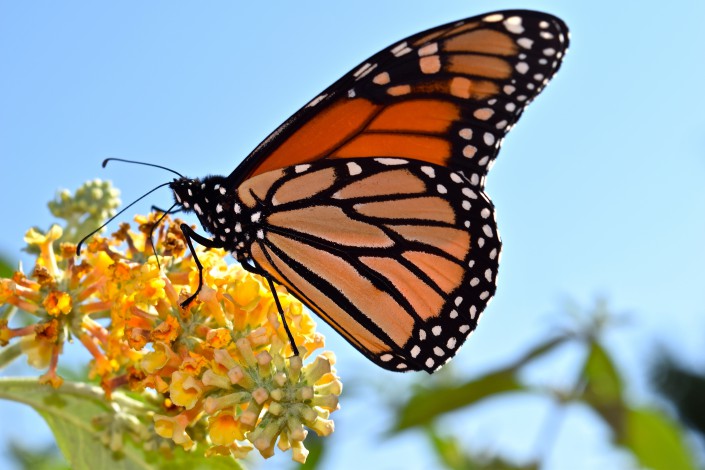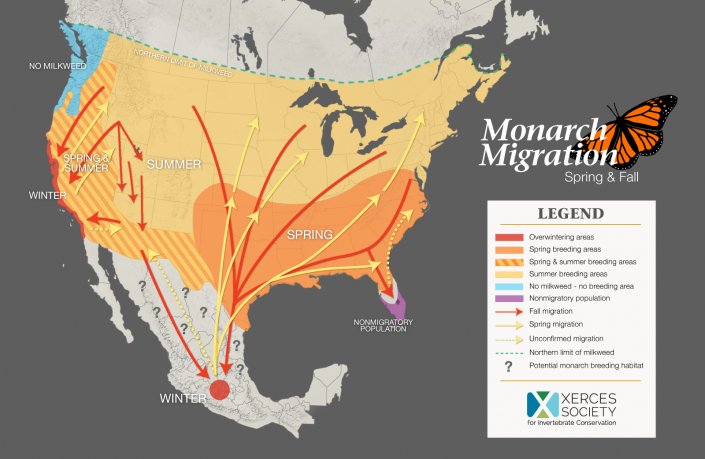The Mighty Migration of the Magnificent Monarch
by Mary Emich, Assistant Biologist

Photo courtesy of Lindsey Brendel.
Over the last decade, the monarch butterfly, Danaus plexippus, population has declined. Climate change has affected weather conditions, the winters are colder and wetter while the summers are hot and drier. This disturbs their survival rate, especially during their long annual migration. Other factors like pesticides and a loss of habitat to human development further threaten the monarch population.
The monarch butterfly migration is mysterious and magnificent. Every fall season, monarch butterflies travel thousands of miles from their breeding grounds in the United States and Canada to escape the cold winters. Monarchs in Eastern North America spend the winter months in the Transverse Neo-Volcanic Mountain Range in Michoacan, Mexico. To reach their destination, monarch butterflies migrate over 3,000 miles, utilizing the air currents and making many stops along the way.

Monarchs are only able to fly during the day. In order to survive the migration, they must find a warm area to roost overnight. One of their stops can be found in Cape May, New Jersey. The Nature Conservancy South Cape May Meadows Preserve in Lower Township is a two-hundred-acre coastal birdwatching sanctuary where many monarchs can be seen during their migration.
From the beginning of September until the end of October the New Jersey Audubon Society oversees the Monarch Monitoring Project, where the census of monarchs is determined. Some butterflies are even tagged for a better estimate of how far they travel. In 2019, the average number of monarchs counted per hour during the nine census weeks was 20.27. For the 2020 results be sure to check out the New Jersey Audubon website.
Although the migration has come to an end due to the cold weather, you may be able to find some fallen monarch butterflies that did not survive their long journey.
There are some easy ways that homeowners can contribute to the monarch migration. Planting flowers that attract monarch butterflies and reducing the use of pesticides in gardens will benefit the population of monarchs. Milkweed, Asclepias, is a great plant to have in a garden. Milkweed is the essential host plant for monarchs, as it allows the larva to be able to develop into a beautiful butterfly.

Mary Emich is an assistant biologist with Conserve Wildlife Foundation.
Recommended Reading: Flight Behavior a novel by Barbara Kingsolver
Read more about Monarch Butterflies in the CWF Field Guide.
Discover more from Conserve Wildlife Foundation of NJ
Subscribe to get the latest posts sent to your email.
Leave a Comment
These are amazing and beautiful. We have a line of milkweed plants in our rain garden and some butterfly bushes also. We did not see so many this summer which is troubling. I hope others in NJ had better luck supporting these beautiful butterflies.
We have a one acre wildlife habitat in Monmouth County, NJ, and are very happy to report that this year our Monarch population was very strong, along with the Spicebush and Black Swallowtails, among others, with 27 Monarch cryslysis surviving and adult Monarchs hatched all in the meadow. This fall we observed about three dozen adults moving through on the migration south.
We eagerly look forward to next year with our winged friends.
Phil and Beverly Ryser
Comments are closed.